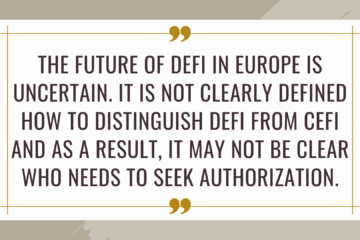PSD2 and Its Impact on Future Monetization Strategies in Payments
Everyone who is anyone in the payments industry has already published [a very long list of…] their summaries on “what do you need to know about PSD2”.
Here are my thoughts on PSD2 and its implications. Instead of boiling the ocean, I will publish a series of posts devoted to specific topics, such as:
- How PSD2 may change the monetization models and cross-selling of payments services? Where are interesting new (or possibly lost) opportunities?
- What do you need to watch for in local PSD2 interpretations, especially when you are thinking about getting a PSP or e-money license and have a choice between several jurisdictions? How local regulatory interpretations could make a difference?
- What is the impact for specific business models, such as aggregators, banks or technical gateways?
This time, let’s talk about monetization.
Technical Gateways will be formally recognized by PSD2 and regulated. They must have a financial license and will gain credibility. The banks must build open APIs and technical integration solutions with them.
PSD2 recognizes and provides legitimacy to various technical gateway solutions. They are called Account Information Service Providers and Payment Initiation Service Providers.
Account Information Service is something like a price-comparison dashboard, that gives you an overview about all your accounts and balances. In order to do this, this dashboard must have access to all your accounts info that you want to see in one place, and because of security implications, this service is going to be regulated, despite the fact that it doesn’t really touch customers money.
How they can monetize?
- Charging providers of other services that consumers may need. If this dashboard provides an overview and gives advice in such a way that triggers future transactions, for example, in the area of insurance selection or investment advice, it can earn commissions from businesses it generates. Just think about it: what if such a dashboard would tell you “I have analyzed your payments and investments patterns for the last year and I think you can benefit from a lower insurance premiums with the provider XXX and you could invest YYY dollars for the next 6 months, because you won’t need them”.
- Charging account owners directly by providing some added benefits for them. Let’s say, you are a merchant selling on EBAY, Amazon and a number of other marketplaces. You can benefit from a platform that has access to all your accounts, if such platform can help you with additional intelligence about your cash flows, pricing recommendations, possible cannibalization across markets, reconciliations, commissions calculations and even tax declarations.
- Price comparison websites will definitely try to enter this space (and they should!).
Payment Initiation Services are gateways (the likes of Sofort or Trustly and many e-wallets) who are not only able to connect you with your bank or credit cards company, but will actually allow you to initiate transactions without visiting the website of your bank or your PayPal account or another online payment method. This service exists today: when you are buying your airline tickets or shopping online, most of the websites allow you to “save” your payment information for faster future purchases. You don’t always realize who is actually responsible for storing this information and linking all the dots, it may not be the actual retailer or airline. Whoever it is, from now on, this service is regulated and must have a financial license, even if they never touch the customers funds.
Gateways have finally gotten the sit at the table. They are connecting merchants who want to be paid, say, in dollars to their Hong Kong bank accounts with the buyers who want to pay with PayPal in euros. This is a newly established regulatory area where many people expect FinTech to flourish.
How to monetize?
- Payment Initiation Gateways can do everything I mentioned earlier for Account Information Services, plus they can charge processing fees.
- Make money on FOREX commissions.
- Since they get regulated, it would totally make sense for them to apply for a broader financial license allowing them to hold customer funds, manage fraud, keep customer balances and much more.
Retail banks (and to some extent even investment banks) would need to reorganize their digital space and IT infrastructure, because if I want to connect my bank account to PayPal, Skrill, Stripe, Whatsapp, Facebook and whatever the next cool app is, I have this right and they can’t refuse. They have to build standard APIs and real-time information exchange solutions and make it secure and available for any gateway I have decided to use. The best thing is – they cannot charge consumers or anyone for doing this
PSD2 is definitely a threat (and also an opportunity) for the banks, because elevation of gateways and active promotion of various account information services introduces additional layer of communications between the banks and their customers. In order to successfully cross-sell more services, you need to engage with your customers and anticipate their needs. Thanks to PSD2, financial information about people’s transactions can be concentrated anywhere, outside of the banking ecosystem, meaning the banks will keep losing their monopoly on information about us. Unless they create a new level of service and added value for their consumers. It’s possible that some banks will actually enter the area of gateways and start acting as account information or account initiation services.
Aggregations and marketplaces in Europe (Uber, Airbnb, Etsy, GettyImages & Co) will need to reorganize themselves or apply for financial license.
This is exactly what the text of the PSD2 says (and you need to watch carefully how it has been transposed into each and every national law):
“The exclusion from the scope of [PSD1] of payment transactions through a commercial agent on behalf of the payer or the payee is applied very differently across the Member States. Certain Member States allow the use of the exclusion by e-commerce platforms that act as an intermediary on behalf of both individual buyers and sellers without a real margin to negotiate or conclude the sale or purchase of goods or services. Such application of the exclusion goes beyond the intended scope set out in that Directive and has the potential to increase risks for consumers, as those providers remain outside the protection of the legal framework…To address those concerns, the exclusion should therefore apply when agents act only on behalf of the payer or only on behalf of the payee, regardless of whether or not they are in possession of client funds. Where agents act on behalf of both the payer and the payee (such as certain e-commerce platform), they should be excluded only if they do not, at any time enter into possession or control of client funds.
E-commerce platforms are booming and will continue to grow. They are definitely the future. Their services go beyond traditional retailers and encompass free-lancers, contractors, babysitters, translators, educational services, travel, taxis, pizza deliveries and so much more. From January 2018 (or earlier, if national regulators decide so), EU-based e-commerce platforms cannot touch customer funds or they need a financial license.
Not touching the funds is problematic:
– Someone needs to manage the risk of non-performance and maintain reserves to address future possible disputes and quality issues and ever-present online fraud. The very nature of multiple buyers and sellers transacting together mandates that there has to be a trusted mediator – ensuring that services are delivered, people get paid, new merchants are vetted, and the dispute resolution process is followed.
– If you are an aggregator, you can obviously hire a financial institution as a “white label” solution to handle the flow of funds for you, but it can be inconvenient and costly:
a) You have to pay to the PSP, and PSP will be technically responsible for all non-performance issues and exposed to consumer protection claims, you need to decide if you need to increase your prices and transactional fees.
b) PSP in the middle could be very disruptive for user experience, because your customers would have to the be customers of this financial institution, they must open a payments account with them, must go via additional verification and logins and it may impact your conversion.
Applying for the financial license could be an option for aggregators, but it often changes a business in many ways: additional roles to be hired, additional reporting, internal bureaucracy and possible impact on the speed of product development and innovation.
Monetization aspects: it’s likely that aggregation will become more expensive.
Bill paying services
In some countries supermarkets, retailers, train stations, mobile operators and various other outlets are used to providing bill paying services. You can walk-in or go online to their websites and use their help to re-charge you pre-paid phone or transportation card, or pay for utilities and other regular household bills. From January 2018 (or sooner, depending on the country) those bill-paying services should be treated as money remittance and will become regulated. It means that either these outlets must apply for financial licenses or use a financial partner or stop offering such services.
How to monetize?
– Search for partnerships between existing financial operators and bill-paying facilities.
Stay tuned for more!




 ) about the “Travel Rule” for blockchain transfers and what might be the first simplified implementation of it for a FInTech startup that’s getting very confused by various complex
) about the “Travel Rule” for blockchain transfers and what might be the first simplified implementation of it for a FInTech startup that’s getting very confused by various complex